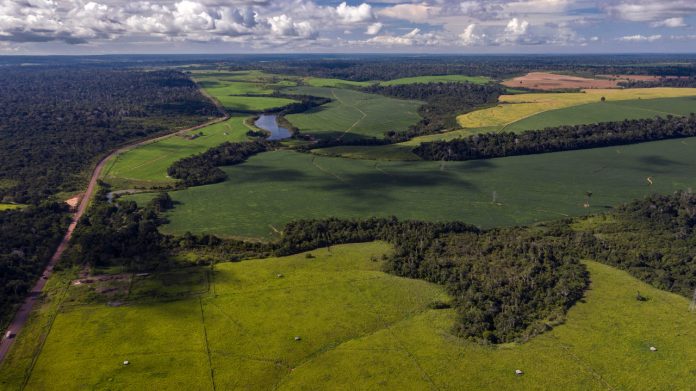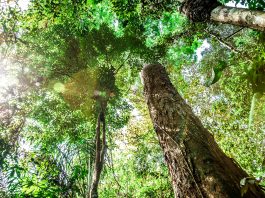An international research team, including Lancaster University, have discovered what actions are required to improve the Amazon’s ecology.
An international team of scientists from Brazil and researchers from Lancaster University, UK, conducted a study into landscape changes in the Brazilian. Their results revealed a revolutionary insight into the environmental threats the biome faces, as well as offering encouraging opportunities for improving the ecology of the Amazon. They examined the ecological impacts caused by changes people are making to forest landscapes in two regions of the Brazilian State of Pará – Santarém and Paragominas.
The study’s discovery is crucial, because as the Amazon moves closer towards a ‘tipping point,’ this research provides a robust evidence base to enlighten how urgently conservation and regeneration are required in the forest. Thus, the research team demonstrate that benefits can be achieved through a range of actions, such as ceasing deforestation.
This study was recently published in the scientific journal Proceedings of the National Academy of Sciences.
“While the focus to date has been on deforestation, we know tropical forest landscapes are being altered by a much broader range of human activities,” explained Dr Cássio Alencar Nunes, lead researcher from Universidade Federal de Lavras in Brazil and Lancaster University in the United Kingdom.
“These modifications include deforestation and degradation of primary forest, for example through selective logging and fires, but even deforested landscapes are changing as agricultural abandonment leads to secondary forest regrowth. As a result, many tropical landscapes are now a mosaic of non-forest land uses, regenerating secondary forests, and degraded primary forests.”
Investigating the rate of transformation between different land uses and their impacts on the ecological condition
Through observation, scientists identified the transitions that are frequent and have high ecological impacts, as well as those that have large impacts but occur less often.
“Our results have revealed a richer understanding of how people are affecting the Amazon and its ecosystem,” said Dr Alencar Nunes.
By collecting data from 310 plots, the research team considered how the observed changes affect biodiversity. As well as this, by examining more than 2,000 species of trees, lianas, birds, and insects, they studied carbon and soil properties. Additionally, scientists took into account published data from 2006 to 2019 that outlined how rapidly the landscape has changed over the past decade.
The impacts caused by deforestation
Their results demonstrated that transitions from primary and secondary forests to pasture through deforestation amounted to 24,000 km² a year. It was also observed that the species richness of almost all the biodiversity groups declined by between 18% and 100% across plots where the primary or secondary forest had been converted to pasture or mechanised agriculture. Transitions from forest to mechanised agriculture had the most ecological impact but occurred less frequently than conversion of forests to pasture.
“Deforestation of primary forests to create pasture is the most damaging land-use change in the Brazilian Amazon,” observed Dr Alencar Nunes. “Our results show that transitions from primary forests to pasture were always classed as ‘high impact, high rate’ for biodiversity, carbon storage, and soil properties. This underlines the critical and urgent importance of combating deforestation, which has been increasing in the past few years.”
What impacts have resulted from this research?
However, the study also uncovered prospects for positive action, for example, highlighting the importance of protecting secondary forests and allowing them to mature. The team revealed that the diversity of large trees doubled, and small tree diversity increased by 55% when young secondary forests became older than 20 years – creating biodiversity and carbon storage gains.
Additionally, other results revealed less obvious forms of degradation that are impacting the Amazon’s ecology. They discovered that changing between types of farming, from cattle pasture to more intensive mechanised agriculture, also diminishes biodiversity, with the diversity of ants and birds decreasing by 30% and 59% respectively.
“These are important findings as they show that there is a multitude of actions that can be taken to protect and improve the ecology of the Amazon. When farmers switch land from pasture to growing crops using mechanised agricultural methods, that is also impacting on biodiversity, but it is a process that is largely hidden when compared to deforestation,” explained Dr Alencar Nunes.
“By reducing the amount of land that is converted to mechanical farming, and by allowing secondary forests to regrow, we can deliver significant ecological restoration gains in the Amazon.
“Our analysis helps to define and prioritise the local and regional actions required to stimulate a better Amazonia.”
What further implications do these results hold for conservation and policy?
“Our results emphasise yet again the importance of tackling deforestation, as well as the additional benefits of avoiding degradation and enhancing the permanence of secondary forests. However, achieving this will require transforming the way the Amazon is currently being managed, including much better integration of science, policy, and local practices,” concluded Jos Barlow, Professor of Conservation Science at the Lancaster Environment Centre of Lancaster University.
“We also highlight the need to focus on biodiversity as well as carbon in tropical forests – of the three ecosystem components that we analysed; biodiversity was the most affected by all the land-use changes. We hope that biodiversity can be included in climate change mitigation actions and that this will be emphasised in the upcoming COP15 on Biodiversity.”









